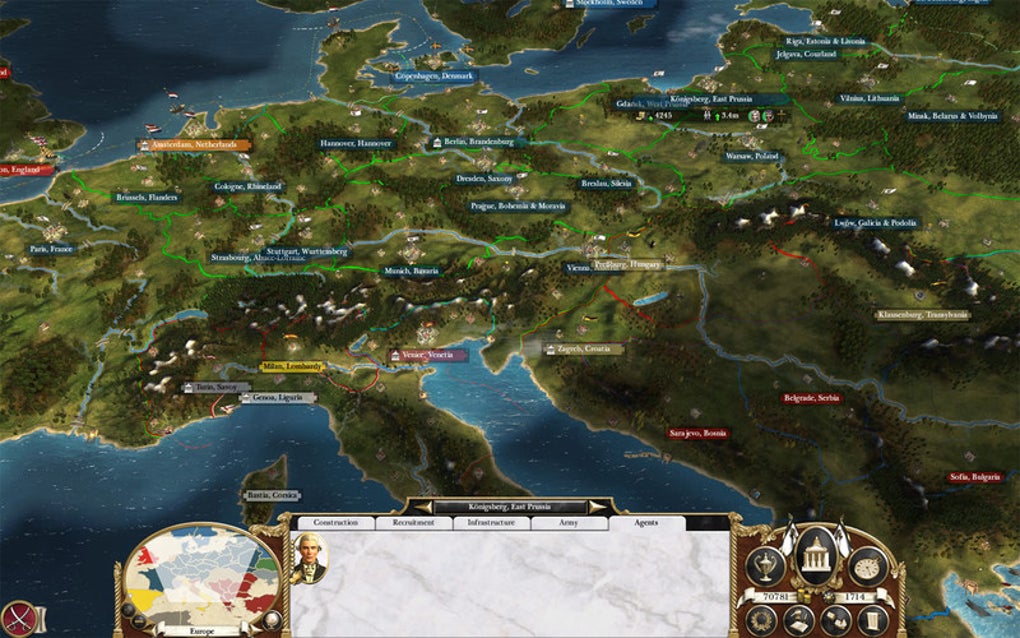Battles Of Napoleon Mac OS
by Michael Haskew
As the afternoon of June 18, 1815, waned at Waterloo, thousands of men and horses lay dead and dying. The carnage of the battlefield was remarkable, and Napoleon Bonaparte knew that he had to act. The center of the Duke of Wellington’s line was holding. The Prussian Army was arriving in ever greater numbers and pressing his right flank and rear. Marshal Ney’s heroic but fruitless charges had spent the cavalry reserve.
[text_ad]
Massive Historical Battles - Fight through battles of the 19th century, with massive armies colliding in varied types of terrain and weather. Varied Game Play - Enjoy the strategic campaign for the dominance of Europe, follow in the footsteps of emperors and generals in history-inspired battles, or duke it out in open-ended skirmishes. By the end of the battle, losses totaled around 3,000 French soldiers and 5,000 allied troops. The tragic irony of this battle, however, was the fact that Napoleon had already been driven back to Paris by northern European forces and forced to surrender. The Battle of Toulouse was, in the grand scheme of things, a thoroughly pointless battle. To play the Waterloo Interactive Battle Simulator, you must first choose whether to play as Napoleon (French side) or as Wellington (Allied side). The computer will play as your opponent.
One more option remained for Napoleon, one last bid to seize victory from the unthinkable – defeat and retribution at the hands of the Seventh Coalition. At approximately 7 PM, Napoleon summoned his Old Guard to form up and follow him northward along the Brussels Road. These troops were veterans of Napoleon’s earlier military campaigns, and they cheered their emperor as they marched.
The French Lines Held Firm Against Wellington’s Barrage
As Napoleon transferred tactical command to Marshal Ney, the Old Guard split into two columns, two battalions heading toward the defiant farmstead of Hougoumont and the rest moving toward the Allied center along the ridge of Mont-Saint-Jean. As the Old Guard advanced, recognizable with their distinctive bearskin hats, Wellington’s artillery, loaded with double shot and canister, opened a deadly fire. The French lines did not waver.
Wellington watched and waited in the midst of one of his Guards brigades, veterans of earlier fighting against the French on the Iberian Peninsula. The riflemen were ordered to lie out of sight on the ground along the reverse slope of the battle-torn ridge and wait for the command to rise up in unison.
Marching on a front that was about 70 soldiers wide, the French were easily taken under flanking fire from the British line that overlapped them on both ends. They continued up the muddy, bloody, and body strewn slope. When they had approached to within 40 yards, the command rang out, “Stand up Guards! Make ready! Fire!”
Battles Of Napoleon Mac Os X
Tearing Into the Ranks Like a Scythe
A devastating volley tore into the ranks of the advancing Old Guard like a scythe. French soldiers fell in heaps, and flanking fire intensified. In seconds, the 1st Foot Guards took advantage of the shock effect, charging directly into Napoleon’s Old Guard with fixed bayonets. The soldiers of the 52nd Foot moved to the right and smartly down the side of the ridge, then wheeled to their left and poured heavy flanking fire into the enemy. The Old Guard tried to deploy to no avail, wavered, broke, and fled in disorder back to Napoleon, who waited at La Belle Alliance.
Wellington ascended to higher ground, surveyed the battlefield, and ordered his regiments forward against the crumbling French right flank. His remaining cavalry pursued the fleeing French soldiers, slashing at them with sabers. The Prussians continued to push forward at Plancenoit, but Napoleon’s troops held there long enough to allow the Old Guard to rally at La Belle Alliance and permit the defeated army to escape the field at Waterloo. Order was not restored in the ranks until the soldiers had crossed the French frontier and reached the town of Phillipeville.

Battles Of Napoleon Mac Os 11

The short-lived revival of Napoleon’s dream of empire was destroyed in a day. He was again banished into exile, this time on the island of St. Helena, where he lived the last six years of his life. Casualties at Waterloo topped 40,000, with the French suffering 29,000 killed and wounded, the British 15,000, and the Prussians 7,000. The price had been high, but Napoleon was finished.
Two centuries later, the Battle of Waterloo stands among the most significant engagements in history. Its repercussions, both political and military are still being assessed today.